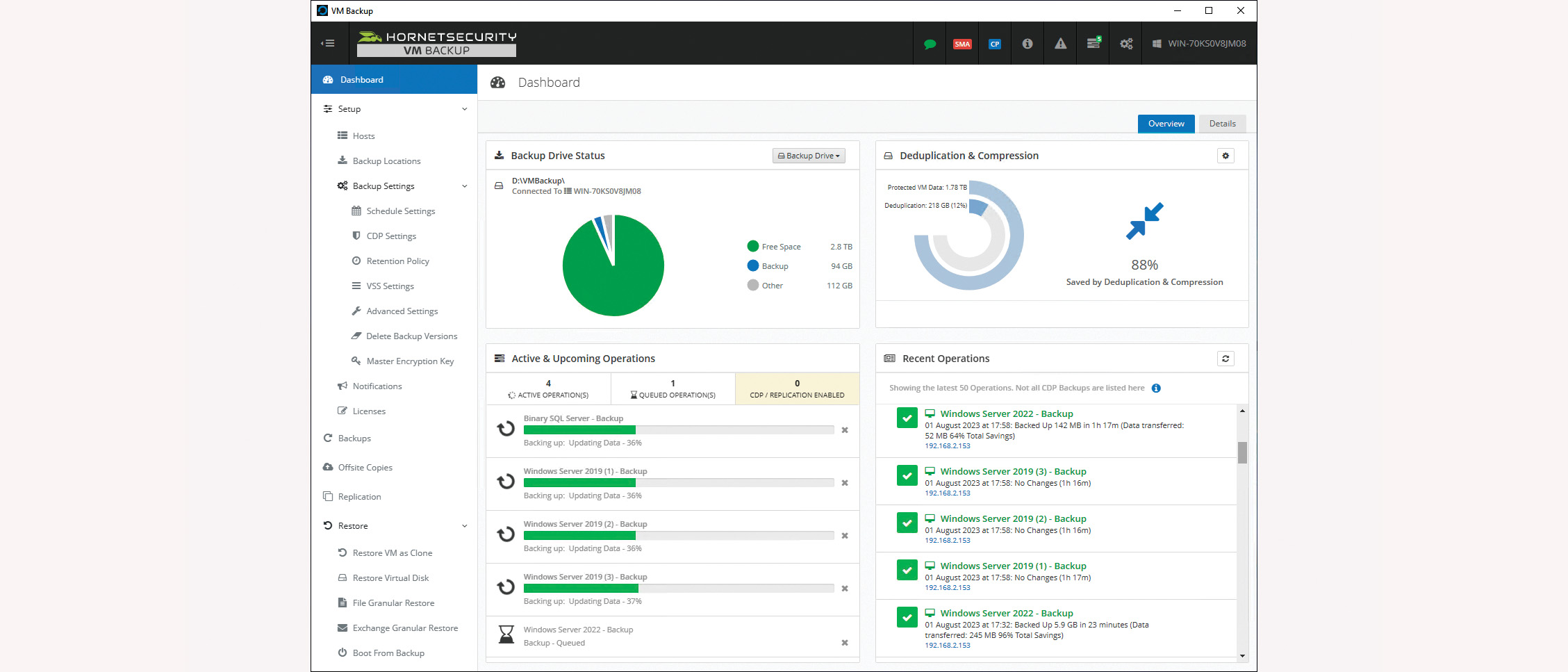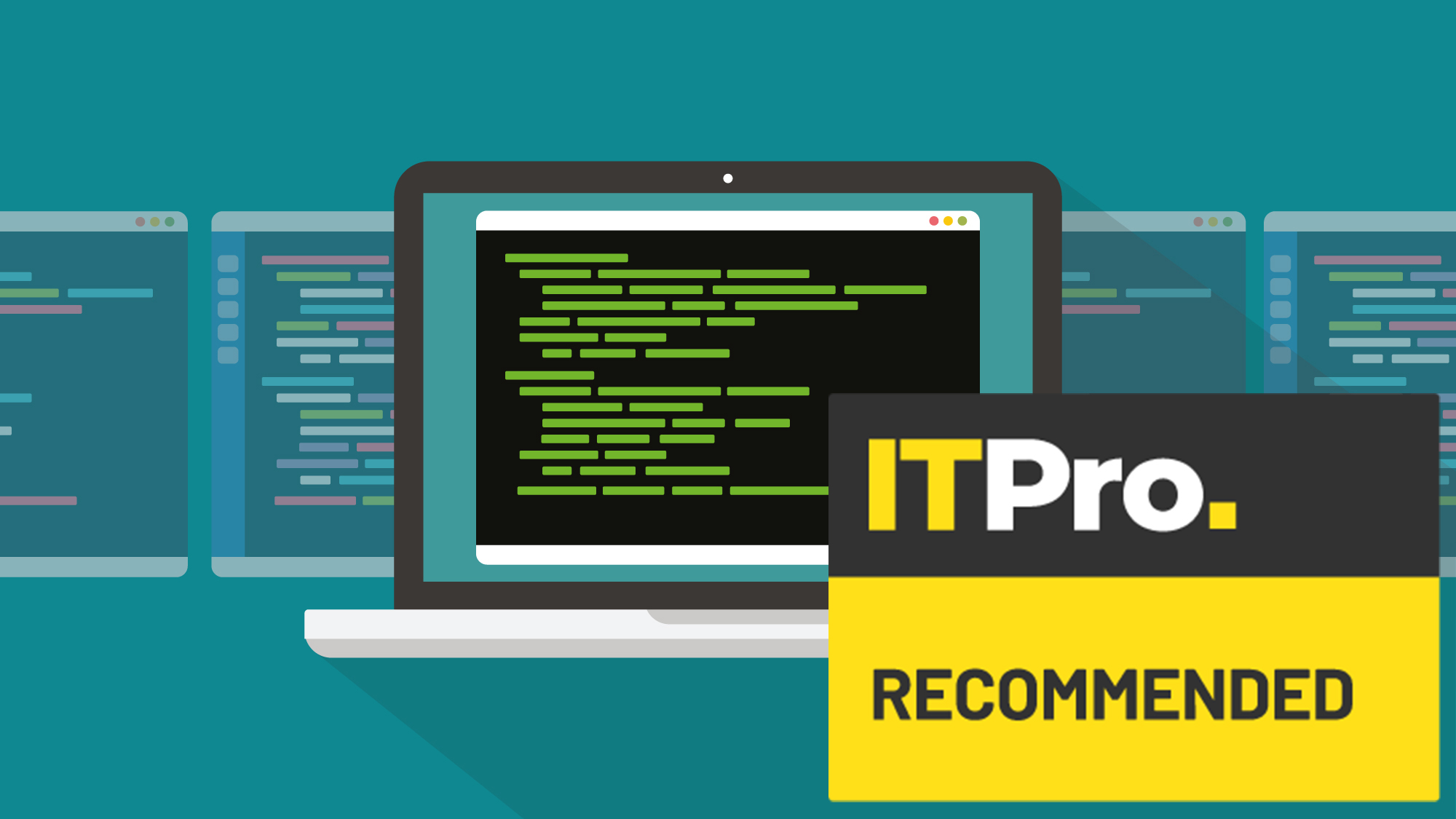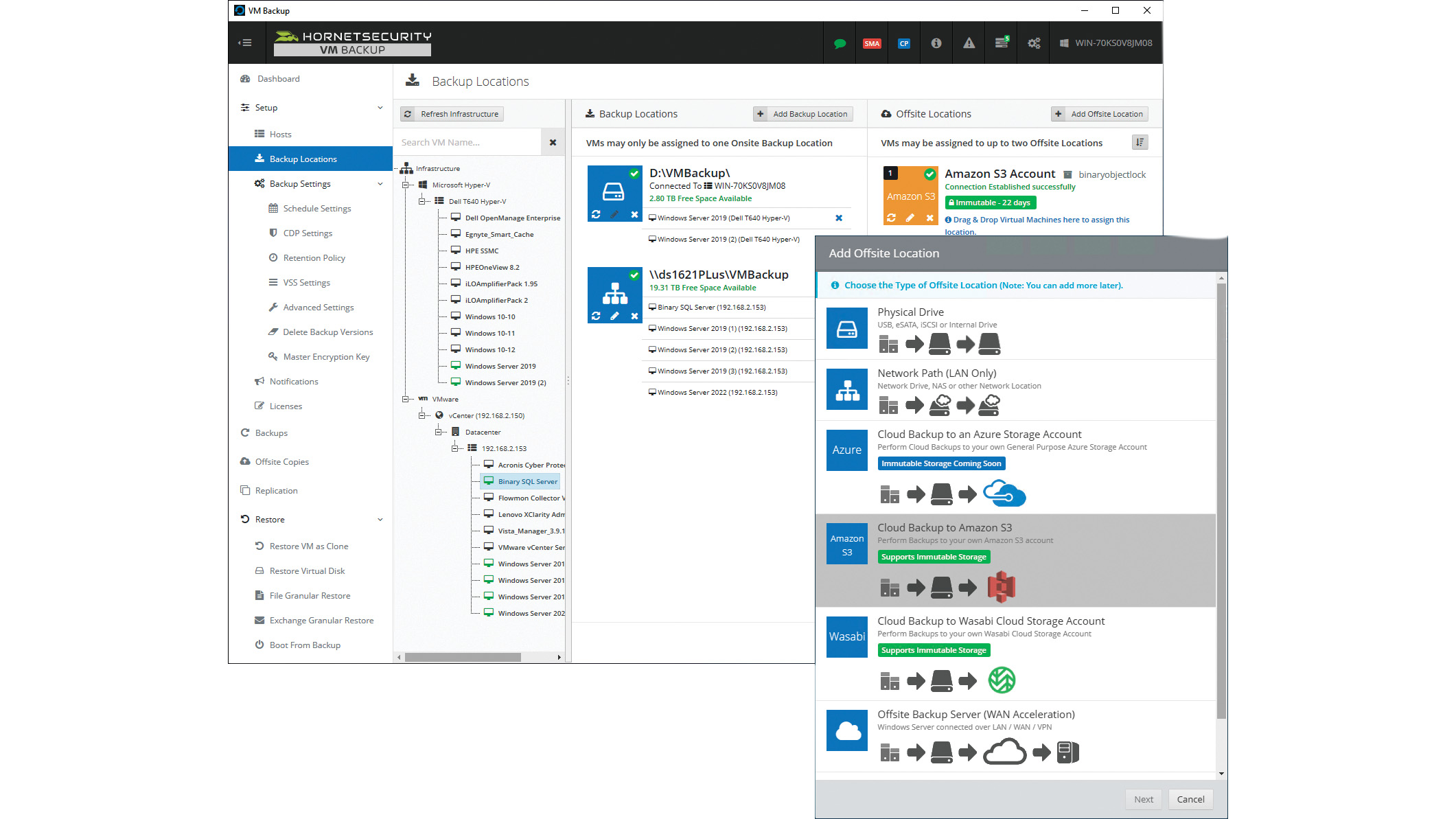Hornetsecurity VM Backup 9 Unlimited Plus review: An affordable choice for Hyper-V and VMware environments
A great price and simple drag-and-drop maneuvers make this ideal for VMware and Hyper-V protection

-
+
Affordable
-
+
Easy to setup
-
+
Host of Features
- +
-
-
None

Hornetsecurity's VM Backup is designed specifically to protect VMware and Hyper-V environments. It presents a clever management console where most operations can be carried out using nothing more than drag and drop.
READ MORE

VM Backup's perpetual licenses are based only on the number of hosts, regardless of the sockets each one has. There's also a subscription model where licensing is charged on the monthly number of VMs being backed up.
A perpetual Standard edition starts at £348 and allows you to back up five VMs per host. You can protect all VMs on each host with the Unlimited edition (£426 per host), while the Unlimited Plus edition on review ups the price to £536 and enables all the features VM Backup has to offer.
And features there are aplenty, with Unlimited Plus 9 enabling support for immutable cloud storage on Amazon S3 and Wasabi, and Azure Blob coming soon. When creating offsite backup locations, you configure these locations as immutable, which brings the Object Lock mechanism into play and turns them into ransomware-resilient WORM repositories.
Hornetsecurity VM Backup 9 Unlimited Plus: Setup
We installed VM Backup on a Windows Server 2019 host and had our VMware and Hyper-V hosts declared in 15 minutes. After assigning a local hard disk backup repository, we dragged and dropped selected VMs onto it and started our first backups.
VM Backup supports local and external storage, iSCSI targets, and UNC paths for NAS shares as backup destination options. For secondary off-site locations, you can use physical devices, network shares, the free Offsite Backup Server app, and standard or immutable cloud storage.
RELATED RESOURCE

Discover how BT can open up new ways to protect and grow your business
We added a Synology NAS share for our on-site backups and an Amazon S3 bucket with Object Lock enabled for immutable off-site cloud storage. Two predefined backup schedules are provided, but it's easy to create your own with the preferred weekly and monthly recurrences, versioning, and retention policies. Each job can include replication to the secondary location. You add VMs by dragging and dropping them on the desired schedule and retention policy icons.
Along with a cloud console for managing multiple VM Backup installations, Unlimited Plus adds constant data protection (CDP) which is enabled on selected VMs and set to run as often as every five minutes. Both Unlimited and Unlimited Plus provide inline deduplication for faster backups, and you can view your storage savings from the dashboard.

A wizard guides you through the data recovery process: you choose a VM, restore its virtual hard disk, clone it, or boot it straight from a backup to its original host or to another one. If you need to retrieve a file, folder, or on-premises Exchange item, VM Backup provides granular recovery technology (GRT) services.
For data restoration, all three VM Backup versions use the Sandbox & Verification feature to confirm the integrity of all backups. Along with verifying data, it runs a background job that clones a VM back to the original host and confirms that it runs correctly.
VM Backup is an affordable choice for Hyper-V and VMware environments. The Unlimited Plus version delivers a wealth of features at a great price, support for immutable cloud storage, adds valuable ransomware protection and it's incredibly easy to use.
This content originally appeared on ITPro's sibling magazine PC Pro. For more information and to subscribe, please visit PC Pro's subscription site.
Get the ITPro daily newsletter
Sign up today and you will receive a free copy of our Future Focus 2025 report - the leading guidance on AI, cybersecurity and other IT challenges as per 700+ senior executives
Dave is an IT consultant and freelance journalist specialising in hands-on reviews of computer networking products covering all market sectors from small businesses to enterprises. Founder of Binary Testing Ltd – the UK’s premier independent network testing laboratory - Dave has over 45 years of experience in the IT industry.
Dave has produced many thousands of in-depth business networking product reviews from his lab which have been reproduced globally. Writing for ITPro and its sister title, PC Pro, he covers all areas of business IT infrastructure, including servers, storage, network security, data protection, cloud, infrastructure and services.
-
 ‘Phishing kits are a force multiplier': Cheap cyber crime kits can be bought on the dark web for less than $25 – and experts warn it’s lowering the barrier of entry for amateur hackers
‘Phishing kits are a force multiplier': Cheap cyber crime kits can be bought on the dark web for less than $25 – and experts warn it’s lowering the barrier of entry for amateur hackersNews Research from NordVPN shows phishing kits are now widely available on the dark web and via messaging apps like Telegram, and are often selling for less than $25.
By Emma Woollacott Published
-
 Redis unveils new tools for developers working on AI applications
Redis unveils new tools for developers working on AI applicationsNews Redis has announced new tools aimed at making it easier for AI developers to build applications and optimize large language model (LLM) outputs.
By Ross Kelly Published
-
 Google layoffs continue with "hundreds" cut from Chrome, Android, and Pixel teams
Google layoffs continue with "hundreds" cut from Chrome, Android, and Pixel teamsNews The tech giant's efficiency drive enters a third year with devices teams the latest target
By Bobby Hellard Published